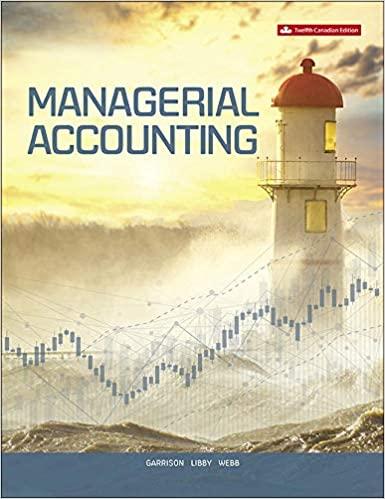




Following is a series of independent cases. In each situation, indicate the cash distribution to be made to partners at the end of the liquidation process. Unless otherwise stated, assume that all solvent partners will reimburse the partnership for their deficit capital balances. Part A The Buarque, Monte, and Vinicius partnership reports the following accounts. Vinicius is personally insolvent and can contribute only an additional $16,000 to the partnership. Cash Liabilities Monte, loan Buarque, capital (50% of profits and losses) Monte, capital (25%) Vinicius, capital (25%) $137,000 42,000 34,000 36,000 47,000 (22,000) (deficit) Part B Drawdy, Langston, and Pearl operate a local accounting firm as a partnership. After working together for several years, they have decided to liquidate the partnership's property. The partners have prepared the following balance sheet: Cash Drawdy, loan Noncash assets $ 27,000 12,000 164,000 Liabilities Langston, loan Drawdy, capital (40%) Langston, capital (30%) Pearl, capital (30%) Total liabilities and capital $ 38,500 20,000 72,000 57,000 15,500 $203,000 Total assets $203,000 The firm sells the noncash assets for $127,000; it will use $22,000 of this amount to pay liquidation expenses. All three of these partners are personally insolvent. Part C Drawdy, Langston, and Pearl operate a local accounting firm as a partnership. After working together for several years, they have decided to liquidate the partnership's property. The partners have prepared the following balance sheet: Cash Drawdy, loan Noncash assets $ 27,000 12,000 164,000 Liabilities Langston, loan Drawdy, capital Langston, capital Pearl, capital Total liabilities and capital $ 38,500 20,000 72,000 57,000 15,500 $203,000 Total assets $203,000 The firm sells the noncash assets for $127,000; it will use $13,000 of this amount to pay liquidation expenses. All three of these partners are personally insolvent. Assume that the profits and losses are split 2:4:4 to Drawdy, Langston, and Pearl, respectively. Part D Following the liquidation of all noncash assets, the partnership of Krups, Lindau, Riedel, and Schnee has the following account balances. Krups is personally insolvent. Liabilities Krups, loan Krups, capital (30% of profits and losses) Lindau, capital (30%) Riedel, capital (20%) Schnee, capital (20%) $ 9,000 13,000 (34,000) deficit (37,000) deficit 22,000 27,000 Required A Required B Required C Required D Indicate the cash distribution to be made to partners at the end of the liquidation process. Unless otherwise stated, assume that all solvent partners will reimburse the partnership for their deficit capital balances. Buarque, Capital Monte, Loan and Capital Vinicius, Capital Beginning balances Contribution by Vinicius Capital balances Elimination of Vinicius's deficit $ 0 $ 0 $ 0 Final distribution $ 0 $ 0 $ 0 Required A Required B Required A Required B Required C Required D Indicate the cash distribution to be made to partners at the end of the liquidation process. Unless otherwise stated, assume that all solvent partners will reimburse the partnership for their deficit capital balances. (Do not round intermediate calculations. Round the final answers to nearest dollar amounts.) Drawdy, Loan and Capital Langston, Loan and Capital Pearl, Capital Beginning balances Loss on disposal Liquidation expenses Capital balances Allocation of Pearl's deficit $ 0 $ 0 $ 0 Final distribution $ 0 $ 0 $ 0 Required A Required B Required C Required D Indicate the cash distribution to be made to partners at the end of the liquidation process. Unless otherwise stated, assume that all solvent partners will reimburse the partnership for their deficit capital balances. (Do not round intermediate calculations. Round the final answers to nearest dollar amounts.) Drawdy, Loan and Capital Langston, Loan and Capital Pearl, Capital Beginning balances Loss on disposal Liquidation expenses Capital balances Allocation of Pearl's deficit balance $ 0 $ 0 $ 0 Final distribution $ 0 $ 0 $ 0











